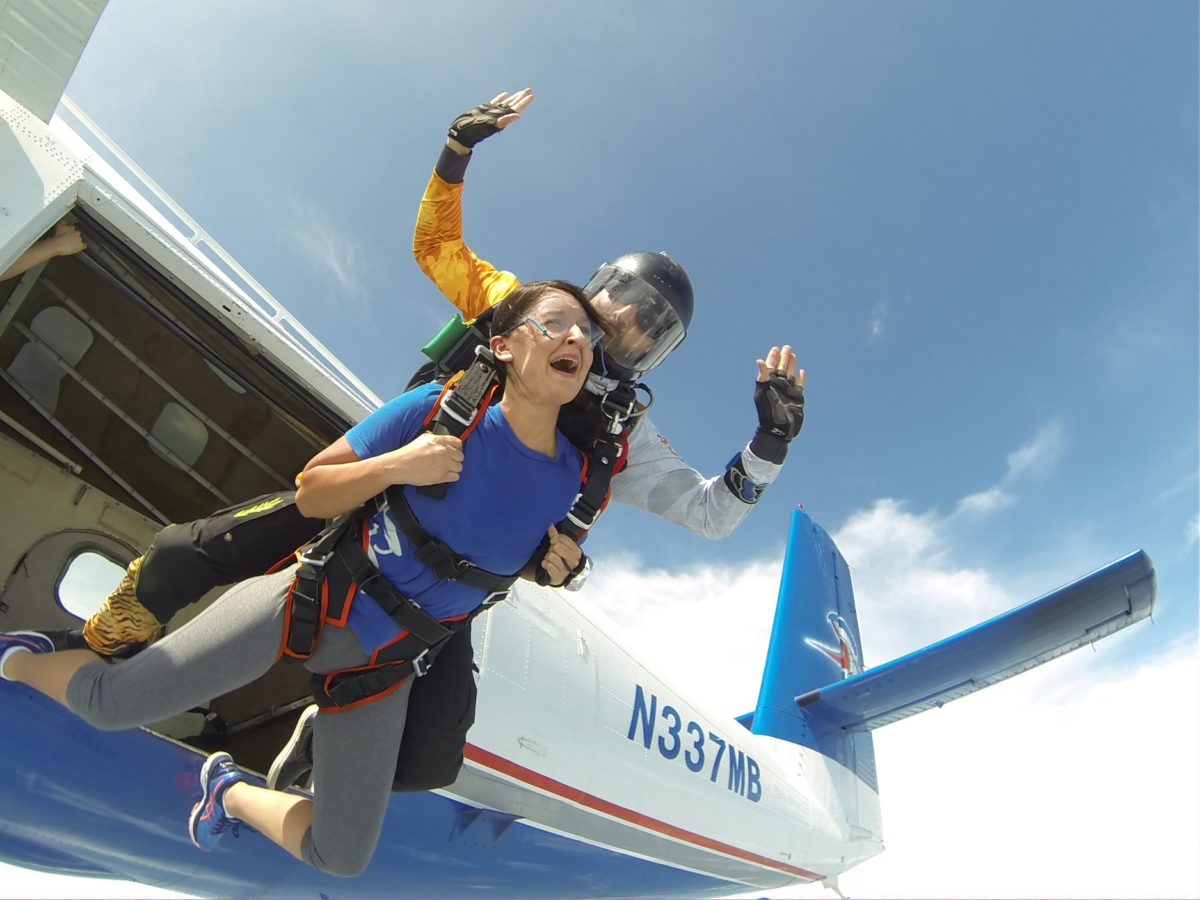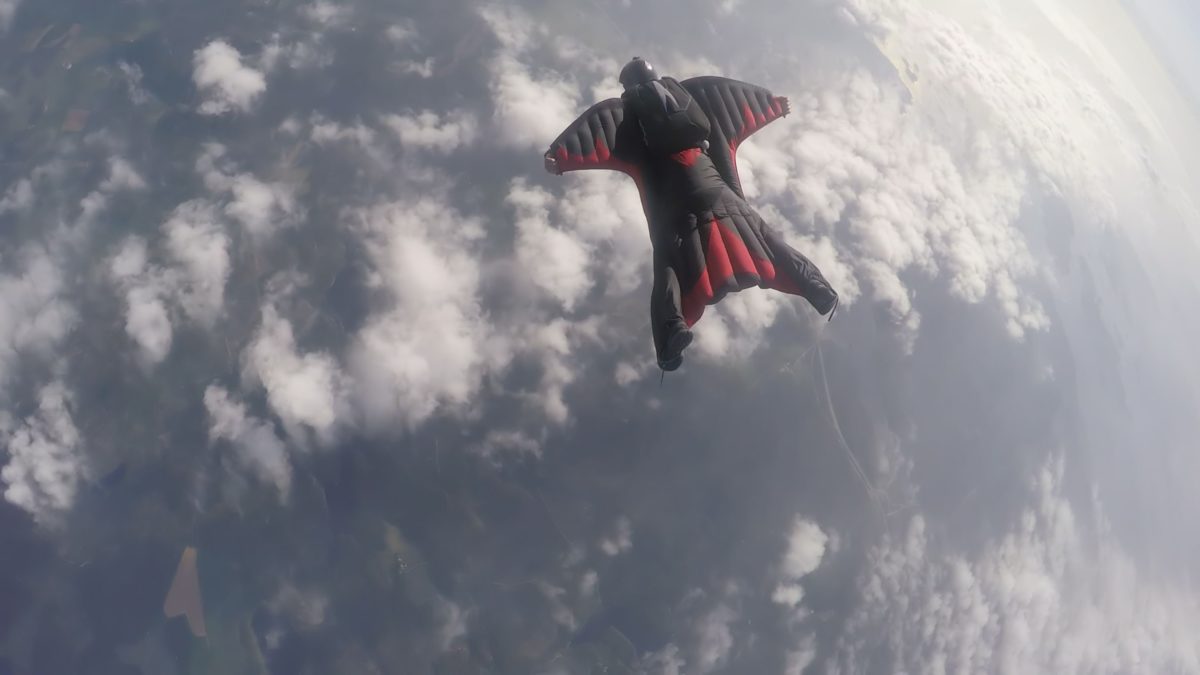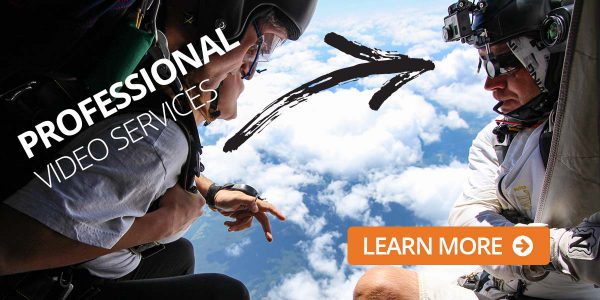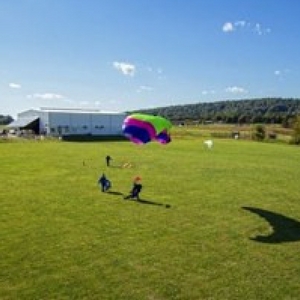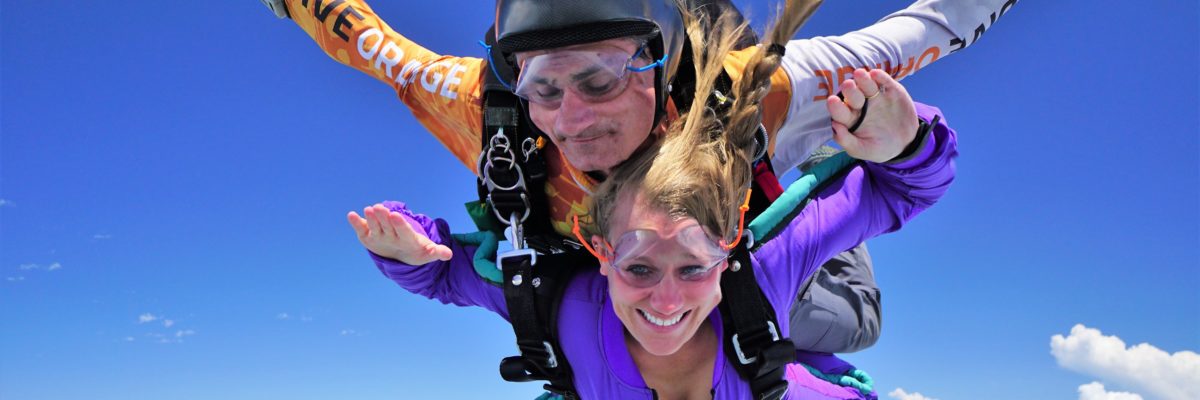
What Can I do With Each Skydiving License?
Thursday, August 31, 2023
- Whitney Payne
- 8/31/23
- 0
- Skydiving Information
If you’re thinking about getting your skydiving license, you may have been wowed by some videos on social media, seen skydivers in person, or may have even been skydiving yourself. And you may be wondering: how many times do you have to skydive before you can go solo, and what can you do once you have your skydiving certification?
Here we’ll help answer those questions and more so you’ll know how to earn your skydiving license, achieve your skydiving A License to USPA C License requirements, and beyond!
HOW TO GET A SKYDIVING LICENSE
The first step to getting your skydiving license is simple: sign up for the First Jump Course (FJC) at Skydive Orange! This comprehensive, 6-8 hour terrestrial training program encompasses all the key aspects of solo skydiving, such as a rundown of the gear, airplane exit strategies, understanding hand gestures, fundamental body posture, parachute navigation, and emergency protocols.
Upon finishing the FJC, you will undertake your initial supervised solo leap with two accredited instructors. From there, we follow the student progression program sanctioned by the United States Parachute Association (USPA) called the Accelerated Freefall Program (AFF).
Each AFF jump is designed with specific freefall and canopy objectives that help you safely progress toward a skydiving license. When each objective is successfully completed, you move up in the program until you’ve met all the minimum requirements of solo skydiving.
By program conclusion, you are eligible to earn the first basic skydiving license through the USPA, your A License.
But then what? How many different types or categories of skydiving license levels are there? That’s where the other licenses come in. There are a total of four skydiving licenses that are classified by consecutive letters of the alphabet: A, B, C, and D. And here’s what you can do with each skydiving license:
USPA A LICENSE
First of all, let’s get down to the details. To achieve an A License, you must:
- complete 25 freefall jumps
- complete all requirements listed on the USPA A License Proficiency Card
- complete 5 group freefall skydives involving at least two participants
- pass the USPA-developed written and oral USPA A License exams conducted by a current USPA I, Examiner, S&TA, Judge, or USPA Board Member
Do skydivers pack their own parachutes? If they want to get their license they do! Even if you choose to use paid packers down the line, you have to at least learn to pack your own parachute to get your A License.
Once you’ve done all of that, you are officially a licensed skydiver. Congratulations! Now you can jump at any USPA-member dropzone on your own!
The A License certifies that you can safely self-supervise your skydive and jump with others. This license is the most basic of the four licenses and mostly acts as a pass to keep learning, but with more people.
USPA B LICENSE
Want more of what our amazing sport has to offer? Continuing to learn offers a lot of great opportunities, and the B License is the next step in the progression.
B License requirements mandate that you:
- meet all current requirements for, or hold a USPA A License
- complete 50 jumps, including:
- accumulate at least 30 minutes of controlled freefall time
- land within 33 feet of the target center on 10 jumps
- successfully complete the planned formation(s) on 10 formation skydives, or 10 formation freefly skydives, at least 5 of which, in either discipline, must involve at least three participants
- document live water landing training with full equipment in accordance with the procedures in the Skydiver’s Information Manual (SIM)
- complete all of the requirements listed on the USPA Canopy Piloting Proficiency Card
- pass the written USPA B License exam conducted by a current USPA I, Examiner, S&TA, Judge, or USPA Board Member
Achieving a B License offers the opportunity to do more amazing things like jumping from novelty aircraft (like a helicopter or hot air balloon), make night jumps, or jump in more exotic locations that require a B License minimum.
B-License holders have a little more experience under their belt and are given more freedom in the air because of it. But they’re not done yet! There are still two more licenses to go before they can be considered top dog.
USPA C LICENSE
The journey continues and opportunities evolve with experience. The C License offers perhaps the most new privileges of any of the skydiving licenses. The most universal draw of the C License is being able to jump with a camera (like a GoPro). And a close second to that is the ability to start wingsuiting.
This is also the point where skydivers can officially become an AFF instructor themselves! And, for those who are performers at heart, participate in exhibition jumps into events and shows. These are all huge milestones in skydiving and can alter the course of a skydiver’s career.
Whether it be flying video, wingsuiting, performing, or instructing, C License holders can commit to a discipline and become a pro at their chosen path.
To qualify for a C-License, you have to:
- meet all current requirements for, or hold, a USPA B License
- complete 200 jumps, including accumulating at least 60 minutes of controlled freefall time
- land within 7 feet of the target center on 25 jumps
- complete 50 formation skydives, or 50 formation freefly skydives, at least 10 of which, in either discipline, involve at least four participants
- pass the USPA written C License exam conducted by a current USPA I, Examiner, S&TA, Judge, or USPA Board Member
This is where the qualifications and privileges start to get serious!
USPA D LICENSE
The move to a D License is a significant moment in a skydiver’s career because the D is also considered the master license. It shows that you’re experienced in freefall and canopy control skills, and it’s the gateway to becoming a tandem instructor in the sport.
The D License is the highest license a skydiver can achieve.
D-License holders must:
- meet all current requirements for, or hold, a USPA C License
- complete 500 jumps including accumulating at least 3 hours of controlled freefall time
- complete at least 2 of the following skills requirements (a requirement may be repeated):
- perform a night jump (following the SIM recommendations)
- land within 7 feet of the target center on 100 jumps
- participate in a canopy formation of a 3 stack or larger, completing a full rotation
- complete an intentional water jump
- complete 100 formation skydives, at least 25 of which must involve at least eight participants
- pass the written USPA D License exam conducted by a current USPA Examiner, S&TA, Judge Examiner, or USPA Board Member
Fun Fact: It used to be mandatory to complete two night jumps to earn a USPA D License. Now there are a few different options to complete for that particular requirement.
The sky’s the limit with a D License, literally! D-License holders can go wherever the wind takes them. They have proven that they have the skills and knowledge to be responsible for their own skydiving career and contribute to other people’s.
UPCOMING ACTIONS
Whether you’re prepared to embark on your Initial Jump Course, transitioning from a different skydiving learner program, or need to fulfill requirements for your subsequent skydiving permit, Skydive Orange boasts an expert teaching squad ready to assist you on your journey!
How many skydivers are licensed in the world? It’s hard to know as the USPA is just one of numerous skydiving associations worldwide. That said, many dropzones outside of the US hold USPA membership, and many acknowledge USPA licenses. In the US, there are more than 40,000 skydivers with current USPA membership. Our community is huge, diverse, and universally welcoming. Hopefully, we can soon count you among our numbers and we can welcome you home!
Ready to begin your skydiving journey? Contact us – we’re here to support you!
The largest tandem skydiving center near Northern Virginia, Washington D.C. and Maryland.
Copyright © 2025, Skydive Orange, All Rights Reserved.
DropZone Web Design & Marketing by Beyond Marketing, LLC
